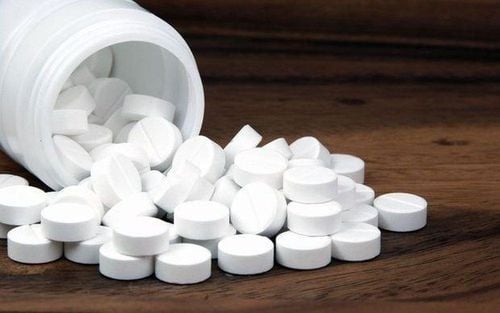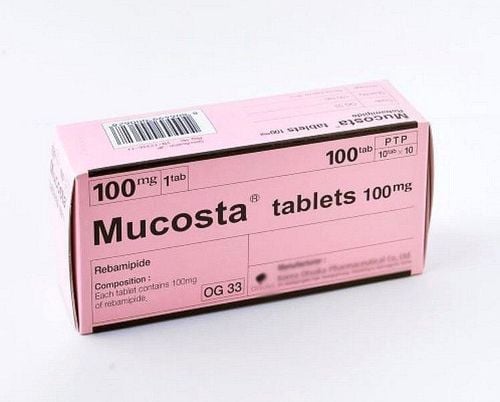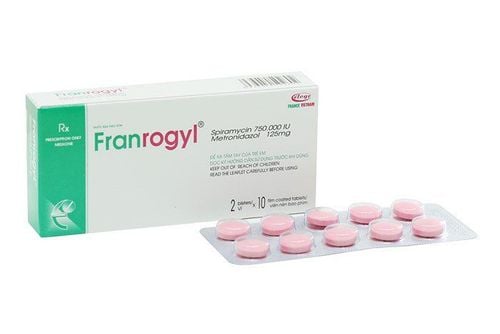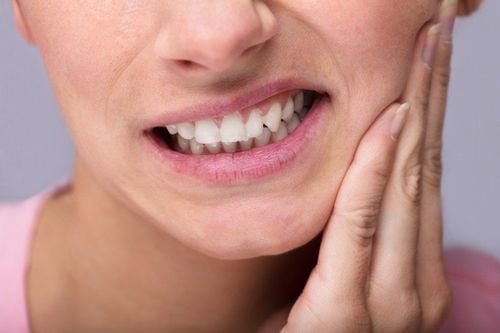This is an automatically translated article.
The article was professionally consulted with Specialist Doctor I Bui Thi Ha - Pediatrician - Neonatologist - Department of Pediatrics - Neonatology - Vinmec Ha Long International General Hospital.Anorexia is a common condition in young children. There are many reasons such as psychological problems, diseases, living habits, ... that make children anorexic. Among them, children with anorexia due to stomatitis are one of the most common.
1. What is anorexia?
Anorexia or anorexia, anorexia, ... is an eating disorder common in children aged 1 - 6 years old, which may be due to psychological or pathological causes. This is a condition in which the child eats less than usual, has no appetite, is not happy, voluntary when eating but needs the prompting and coaxing of adults.
Signs of anorexia:
Children eat less than usual Children only eat a few foods and it is difficult to change new foods Meals last more than 30 minutes or even hours because children refuses to swallow food The child shows signs of fear of eating, runs away or cries when it comes to meals The child has nausea or vomiting when seeing food, smelling food. In addition, to identify an anorexic child, the family needs to rely on the following indicators:
The amount of food that the child eats in a day is less than the need for age The child is often constipated, the amount of stool is less than normal Children slower-than-normal weight gain (even no weight gain or weight loss) In addition, a number of other criteria may be checked by doctors to make an accurate diagnosis of anorexia. A child's anorexia can cause a number of consequences such as:
Anorexic children have a higher risk of growth retardation than other children of the same age Anorexic children may be malnourished Children anorexic children are prone to health problems such as anemia, digestive disorders, reduced bone density and hormone imbalance Children with anorexia often obsess about food and body weight
2. Child anorexia due to stomatitis
2.1 Causes There are many causes of anorexia in children such as: Psychology, pathology, physiology, medicine, mistakes in diet and food preparation, congenital,... In which, anorexia Diseases - especially oral diseases are common causes of children's loss of appetite and loss of appetite.
Specifically, diseases of the teeth such as teething, tooth decay, mouth ulcers in children, gingivitis in children, ... will cause pain and discomfort for children when chewing and swallowing food and lead to a condition. anorexia, lazy eating in children. Causes of gingivitis, mouth ulcers in children can be mentioned as: Poor oral hygiene, teething process, allergies (to food, milk, living environment), invading bacteria. into the child's oral cavity, side effects of some drugs (antiepileptic drugs, immunosuppressants, blood pressure drugs,...), neutropenia,...

Viêm răng lợi hay loét miệng ở trẻ,...là những nguyên nhân thường gặp khiến bé biếng ăn
2.2 How to handle To treat anorexia in children due to oral diseases, parents need to pay attention to maintaining oral hygiene for children and early treatment of oral diseases. In cases where the child has a lot of pain due to stomatitis, sore throat, teething, ..., the baby can use pain relievers as prescribed by the doctor.
To help children feel more comfortable and thoroughly treat the child's anorexia caused by stomatitis, parents should:
After cleaning the child's teeth, the child should rinse his mouth with warm salt water diluted . If possible, parents should let the baby suck the salt water for a few minutes and then rinse the mouth thoroughly. Do not give your child hot food, salty foods or foods that can leave a lot of plaque, helping to limit the spread of sores in the child's mouth. Use natural foods that are cool, prevent bacteria and reduce inflammation such as aloe vera, honey, cucumber, ... to apply to the inflamed gums of children about 2-3 times a day. Some simple measures to help prevent dental disease in children include:
Instruct children to brush their teeth thoroughly twice a day, for about 3 minutes each time. Give children a toothpaste containing fluoride and substances that are good for their teeth. , gums Use a soft-bristled toothbrush to clean between teeth and deep inside teeth After 3-4 months, children need to change toothbrushes Build a healthy, age-appropriate diet of children. Parents should limit their children to eating junk food and foods high in sugar because they encourage bacteria that cause dental plaque to grow faster. Periodically let children go for dental check-ups every 6 months. To solve the root problem of children with anorexia due to stomatitis, it is necessary to cooperate with parents with a dentist and a nutritionist. When seeing that the child has signs of dental disease, parents should take the child to the doctor as soon as possible to have the doctor assess the extent of the disease and prescribe the appropriate treatment. In the case of children with prolonged anorexia, malabsorption, and growth retardation, parents should supplement children with supportive products containing lysine, essential micro-minerals and vitamins such as zinc, chromium, selenium, and B vitamins. help meet the nutritional needs of children. At the same time, these essential vitamins also support digestion, enhance nutrient absorption, help improve anorexia, and help children eat well. Parents can simultaneously apply dietary supplements and functional foods derived from nature for easy absorption. The most important thing is that improving your baby's symptoms often takes a long time. Combining many types of functional foods at the same time or changing many types in a short time can make the baby's digestive system unable to adapt and completely not good. Therefore, parents must be really patient with their children and regularly visit the website vimec.com to update useful baby care information.














